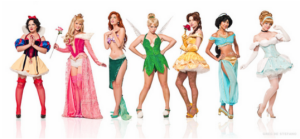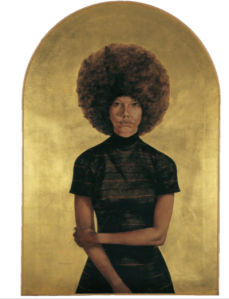Disney is one of the most loved franchises anywhere. Disney World was and continues to be the most visited theme parks in the world, four decades after its initial opening. The Disney Corporation has a net worth of 74.9 billion dollars. It has produced and released a whopping 558 movies for a total of $68,931,877,668 in theater profit (that’s enough to buy the New England Patriots thirty-two times over), with DVD revenues still rolling in. Frozen has generated 3.2 million dollars and the toy line remains a popular item in stores. Again, in my opinion, one of the most beloved franchises in the world.
I mean, it’s hard not to love them, right? I for one am a sucker for a sweet soundtrack, and boy, do they deliver within thirty minutes or less because otherwise they would lose the so sought after profit. Musical numbers illustrating the plague of parental misunderstandings, or the misfortune when the guy you so desperately have your set heart upon is wayyyy out of your league, or those moments in life where you are not quite sure who you are or who you want to be. You name it, Disney has a set of lyrics for it. But it is not only the tunes that reel me straight into their pocket, no, good ol’ Mickey Mouse can also serve as a two-dimensional mentor-type figure.
Disney highlights several different life lessons throughout the course of its discography. To begin with, almost all of the main characters are under the age of twenty-one or over the age of sixty. They want to provide reassurance that you are always capable of making your own decisions, no matter how many years have been tacked onto your birth certificate. The same goes for gender, don’t relinquish your dreams simply because of what your gender implies about you. Disney has even embraced the discussion of race, creating a Chinese princess and her magical dragon and an African American woman from the bayou, both of whom reach their long awaited dreams. This reinforces the idea to love yourself and realizing that skin colors aren’t important, it’s what is inside. Finding a way out of a bad situation is the final life lesson that Disney touches upon. They tell you that there is always a chance to change a bad situation, whether it be the lack of companionship, family, or funds. Disney is actually the best and only teaches its viewers, especially young children, positive messages and lessons for life.
Wait, what? I hate to break it to you but… Disney is the producer of some blatantly distasteful material. I know I know, it’s your childhood and it can’t be, gulp, bad. But don’t you fret, I’m not going to ruin or kill your childhood, only slightly disfigure it a little. You’re still going to be able to love it when you’ve finished this essay, but you’ll think twice before introducing it at dinner parties.
Let’s get down to it then shall we? The four categories we shall be using to slowly disembowel the early part of your life are: portrayal of age, how characters of different ages behave and interact and how it is presented in remainder of the film. Portrayal of gender roles, how different genders are portrayed and how they interact and the significance of their roles in the film. Portrayal of race *gasp*, the diversity of the cast, how they are portrayed and the interactions between the different races, as well as the use of common stereotypes in this case. And social classism, the portrayal of the social class of the characters and how that influences their life and decisions. Unbelievable as it is, Disney has consistently showcased examples of these four issues. And while the main focus of this post will be on princess movies, a vast majority of Disney exhibits faults. From Snow White and the Seven Dwarfs in 1937 to Frozen last year, another side of Walt has seeped through the screen.
AGE
To begin, I’m going to gently ease you into the familiar realm of age portrayal. Everybody knows that the Disney princesses were all young when they appear in the films, but do you know just how young they really are? We’ll go in order from youngest to oldest: Snow White is fourteen, Jasmine is fifteen, Mulan and Ariel are sixteen, Belle is seventeen, Rapunzel and Pocahontas are eighteen, and Tiana and Cinderella are the oldest Disney princesses at nineteen. Their ages don’t seem so bad until you get a look at the decisions they were making at the time. Each and everyone, with the exception of Tiana and Mulan, (except less so Mulan as at the beginning her goal was to impress a suitor in the song “You’ll Bring Honor to Us All”) had their eyes set on their prize, true love. Which seems like a huge theme in Disney: you can’t be happy until you’re settled down with moneybags and knocked up sorry, and many times your family, friends, or culture is forcing you into it.
Another thing about age: all of the princes are in fact years older than their princesses. For Instance, John Smith is twenty-seven, Pocahontas is eighteen. That is a nine year age gap, pretty substantial in my opinion. The rest of the ages are as follows from youngest to oldest: Aladdin is eighteen (as you can see, he is already older than almost all the princesses), Prince Eric is nineteen, Prince Ferdinand is twenty, Prince Phillip is twenty-one, Prince Naveen and Prince Charming are twenty-three, Prince Adam is twenty-four, Flynn Ryder is twenty-five, and again, John Smith is a whopping twenty-seven years old. In the films, many of these men are also being pressured into marriage, but only because they evaded it for so long. The men have the option to say “no, you know what? I think I’m good for now. I think I’ll stay a bachelor for a tad bit longer.”
GENDER
Gender is another category that most people have accepted as being stereotypically portrayed by Disney. The Princesses all posses small waists, remarkably beautiful faces, silky hair, and a desire for true love. The Princes exhibit broad shoulders, chins chiseled from the finest marble, and the notion that they must be the savior of all things holy, and by holy, I mean gorgeous young women. A prime example would be the Little Mermaid, and our dear friends, Ariel, Prince Eric, King Triton, and Ursula.
The Little Mermaid focuses on just that, a little mermaid Ariel. As previously mentioned, it’s hard to remember that she is only sixteen years of age, with all her gallivanting around dreaming about men and making magic deals with underwater witches. She is the proud owner of voluptuous set of hips and a scantily clad upper half showcasing an uncovered midriff and only a purple clamshell bra hiding her lovely lady lumps from the rest of the aquatic kingdom. If creating such an effect of her body wasn’t enough, Ariel comes to the realization that Prince Eric will never be able to love her in mermaid form, which leads her to Ursula in an attempt to transform into a human. Once there, She comes to the conclusion that ” if I become human, I’ll never see my father again” to which Ursula (the large, unattractive, evil octopus witch) responds “but you’ll have your prince.” Leading us to believe that finding your man is important enough to leave your friends, family, and home behind forever.
Oh, and I forgot, GIVE YOUR BLOODY VOICE AWAY TO THE EVIL SEA WITCH WHO IS TRYING TO IMPRISION YOU FOREVER. Did I neglect to mention that? Ariel gives away her voice to the behemoth Ursula to ditch her entire future for a man she has never spoken to. Which then creates a plethora of addition problems. For one, an entire musical number encouraging our dashingly oblivious Prince Eric to attempt to make out with a cute mute girl he found wearing an old sail by the ocean earlier that day. How romantic, this simply screams men can take what they want from a woman without her consent.
CLASS
Okay, this is where things start to get a little tricky. No one ever really pays attention to the social standing of animated characters, do they? Disney didn’t make it so every Princess’ (or Prince’s) dream is to escapes the confines of her rat filled, raggedy clothes, not so luxurious life, did they? You see Cinderella with a mop, Rapunzel in a tower, Aurora living in the woods. The goal of all Disney characters is to find their dream and see it come true, at any cost. This is especially realized by Tiana, who kissed a frog to have her dream.
Tiana is my second favorite princess (only because Mulan is a friggen’ badass), at the beginning of the film she’s independent, has three jobs, and knows what she wants: to open up her own restaurant in honor and memory of her father. The only problem is, she’s not at all wealthy, not even well off. When she open her drawer to replace the image of her father’s dream restaurant, we get a glimpse of her savings: a bunch of jars filled to the tee with change, most likely her life earnings of tips. Despite the lack of funds, she manages to scrounge up enough to buy her restaurant, until the two men she’s buying from tell her it’s better for “a little woman in her situation” to stay away from purchasing anything too large. So when the opportunity arises to swap spit with a frog who 1. claims he is a prince and 2. will help her open her restuarant, does she do it? Of course! The woman was just wishing upon a star for an opportunity like this. The only way out an unfortunate life style is to make a quick wish followed by a quick kiss in hopes your dreams really do come true. Right, Walt?
RACE
Alright, last but not least, the one nobody wants to talk about, the category that is sure to impact the way you view our fondest childhood memories, race. And how Mr. Walt Disney was, in fact, A LITTLE BIT RACIST. *dun dun duuuun* There are actually an unfortunate number of racist moments in the Disney discography. The Native Americans in Peter Pan with their pipes, headdresses, and tribal throat singing. The German and Mexican dogs with thick accents left in the pound due to their foreignness in England. Or my favorite, Fantasia.
Fantasia was my mom’s favorite movie as a kid so when I could form thoughts and words she put it on for me. It’s quite wonderful all the sorcery and cherubs and musicals talent, and oh yeah, the little black centaurette that dotes upon the dashing, white centaurettes. I feel as though a verbal description will not suffice so instead I will show you.


That’s just great isn’t it? My deepest apologies, but there is absolutely no way around this, Disney had some issues.
RECAP
So there you have it folks, the disembowelment of your fondest childhood memories, in four different ways. And although only three specific movies were mentioned, almost all movies fit into almost all the categories. So next time you take time out of your day to sit down and watch a disney flic, keep your eyes peeled for the four deadly sins of media. That’s that’s that’s all folks!


 Elsa singing Let It Go
Elsa singing Let It Go







